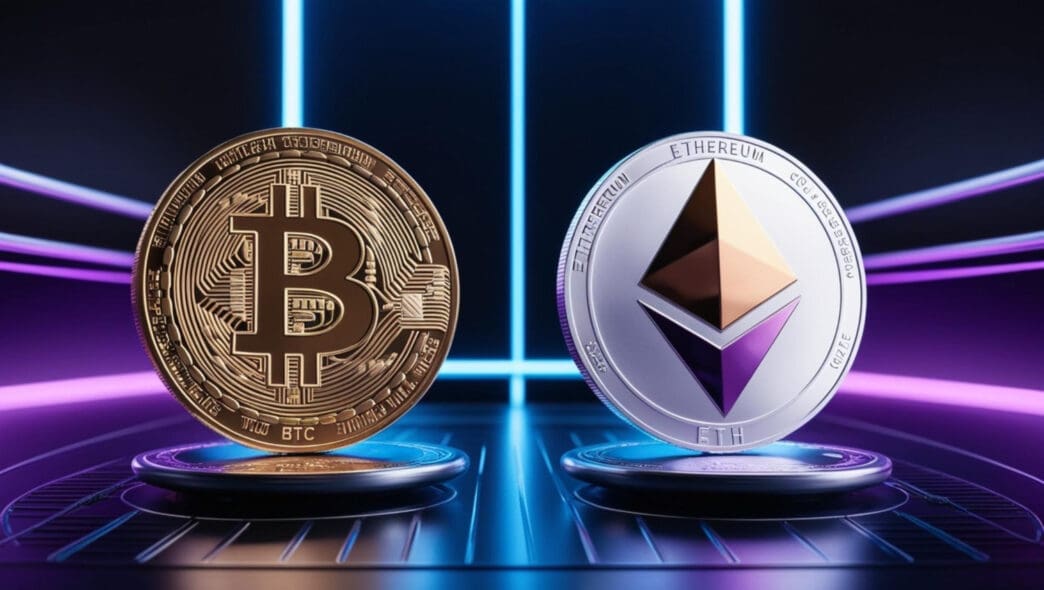Executive Summary
- BlackRock is rapidly increasing its holdings of Bitcoin and Ethereum through its ETFs, positioning it as a leading custodian for these cryptocurrencies and potentially influencing market prices.
- Bitcoin’s foundational design presents limitations, including slower transaction speeds, higher fees, and restricted utility for activities like staking or direct dApp interaction.
- Bitcoin Hyper is developing a Layer 2 solution using a Solana Virtual Machine to enhance Bitcoin’s speed, lower transaction costs, and expand utility for wrapped BTC, enabling trading and staking.
The Story So Far
- The increasing institutional interest in cryptocurrencies, particularly evidenced by firms like BlackRock rapidly accumulating Bitcoin and Ethereum, is reducing the liquid supply of these assets, which in turn is seen as a factor influencing market prices and drawing more mainstream attention. Concurrently, the foundational limitations of Bitcoin, such as slow transaction speeds and restricted utility, are driving the emergence of Layer 2 solutions like Bitcoin Hyper, which aim to enhance the network’s efficiency and expand its functionalities for activities like staking and dApps.
Why This Matters
- BlackRock’s aggressive accumulation of Bitcoin and Ethereum through its ETFs marks a significant increase in institutional engagement, potentially reducing the liquid supply of these cryptocurrencies and driving upward price pressure while further legitimizing digital assets within traditional finance. Concurrently, the emergence of Layer 2 solutions like Bitcoin Hyper aims to address Bitcoin’s core limitations by enhancing transaction speed, lowering costs, and expanding its utility for dApps and staking, which could broaden its appeal and use cases beyond a simple store of value.
Who Thinks What?
- BlackRock is aggressively increasing its holdings of Bitcoin (BTC) and Ethereum (ETH) through its ETFs, positioning itself as a leading custodian and signifying growing institutional engagement in the cryptocurrency market.
- Market analysts suggest that the significant institutional accumulation, exemplified by BlackRock, is reducing the liquid supply of cryptocurrencies, which could contribute to upward price pressure and enhance the attractiveness of digital assets.
- Projects like Bitcoin Hyper propose a Layer 2 solution to address Bitcoin’s core limitations, aiming to provide enhanced speed, lower transaction costs, and expanded utility for BTC by enabling activities such as trading and staking.
BlackRock is rapidly increasing its holdings of Bitcoin (BTC) and Ethereum (ETH) through its exchange-traded funds (ETFs), positioning the firm to become a leading custodian for the world’s largest cryptocurrencies. This aggressive accumulation, which has seen BlackRock’s digital asset holdings surge significantly since January, is bringing it closer to the current top custodians like Binance and Coinbase, and is cited as a factor potentially influencing market prices.
BlackRock’s Growing Crypto Footprint
Data from Arkham indicates a substantial increase in BlackRock’s crypto assets. The iShares Ethereum Trust ETF’s holdings reportedly grew from 1.1 million ETH in January to 3.6 million ETH today. Similarly, its iShares Bitcoin Trust ETF expanded its BTC holdings from 228,000 at the beginning of the year to 745,500 currently.
This rapid accumulation places BlackRock’s ETFs in close proximity to the current market leaders. Binance holds approximately 626,200 BTC and 4.3 million ETH, while Coinbase manages about 977,200 BTC and 5.1 million ETH.
The continued institutional interest and significant whale purchases of these cryptocurrencies are, according to the source, reducing their liquid supply. This scarcity, it suggests, could contribute to upward price pressure and enhance the attractiveness of these digital assets, thereby drawing more traders to buy or hold them.
Innovating on Bitcoin’s Core Strengths
While Bitcoin remains a premier asset for investors, its foundational design presents certain limitations. These include slower transaction speeds, which can lead to higher fees, and restricted utility, as BTC cannot be directly used for staking or interacting with decentralized applications (dApps) without modifications to its core protocol, which could compromise security.
Bitcoin Hyper Proposes a Layer 2 Solution
In response to these challenges, projects like Bitcoin Hyper (HYPER) are emerging. Bitcoin Hyper aims to develop a Bitcoin Layer 2 solution designed to bring enhanced speed, lower transaction costs, and expanded utility to the Bitcoin ecosystem, reportedly targeting performance levels akin to Solana.
The project envisions a “fast lane” for Bitcoin’s congested Layer 1. Users would be able to transfer their BTC to the Layer 2 via a Canonical Bridge, creating a wrapped BTC of equivalent value. This wrapped asset could then be used for activities previously unavailable on the native Bitcoin chain, such as trading and staking.
Bitcoin Hyper’s proposed high-speed environment is powered by a Solana Virtual Machine (SVM), which the project claims will facilitate significantly faster and cheaper transactions. The Layer 2 is designed to regularly synchronize with the Layer 1 to ensure accurate tracking of BTC amounts and values, with a withdrawal mechanism available for users to return their coins to their Bitcoin wallet addresses on the base layer.
The project has reportedly raised nearly $12.5 million to date, positioning it as a notable presale in the current market. Bitcoin Hyper tokens (HYPER) are available for purchase at approximately $0.012815, with staking options offering rewards at 89% per annum. Projections from the source suggest HYPER could potentially reach $1.50 by 2030, assuming the project fully matures.
The increasing institutional engagement, exemplified by BlackRock’s significant accumulation of Bitcoin and Ethereum, continues to shape the cryptocurrency landscape. This trend, alongside the market dynamics of reduced liquid supply, is drawing attention to both established assets and innovative projects like Bitcoin Hyper, which seek to enhance the utility and efficiency of core blockchain technologies.







